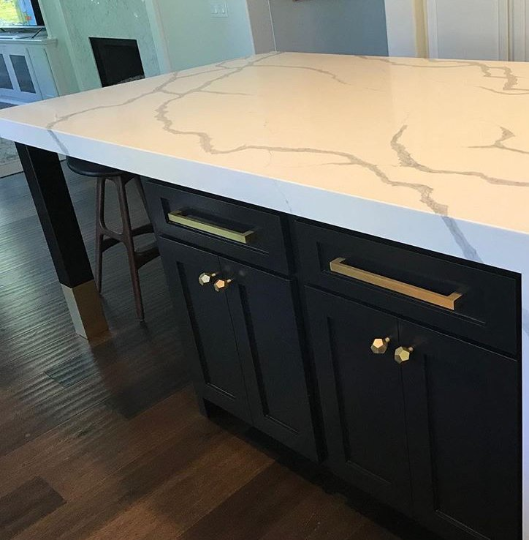Personalize Your Kitchen Look with Distinct Legs For Kitchen Island Choices
Personalize Your Kitchen Look with Distinct Legs For Kitchen Island Choices
Blog Article
A Guide to Selecting the Perfect Legs For Kitchen Island for Your Home
Choosing the ideal legs for your kitchen area island is a nuanced choice that influences both the capability and aesthetic allure of this main area. As you think about these components, it ends up being obvious that the appropriate legs can change not only the look of your cooking area but also its use for years to come.

Recognizing Cooking Area Island Legs
When selecting legs for a cooking area island, it's necessary to recognize their aesthetic and useful roles in the general style. The legs offer as a critical support system, ensuring stability and longevity for the island, which usually operates as an office, dining area, or collecting place. The selection of product and building and construction strategy have to be durable enough to withstand everyday usage and prospective wear.
In addition to their structural duties, legs add considerably to the island's aesthetic appeal. They can improve the kitchen area's design, whether through standard, contemporary, or diverse layouts. The elevation and percentage of the legs are additionally critical considerations; they have to integrate with the island's counter top elevation while making sure comfortable seating for those using the area.
In addition, the leg layout can influence the overall flow of the kitchen. Open, ventilated leg styles can produce a feeling of agility, while solid, considerable legs may convey a much more based and secure aesthetic - Legs For Kitchen Island. Recognizing these aesthetic and functional aspects will assist house owners in making informed selections that match their cooking area's style and enhance its functionality
Popular Styles and Products
The choice of legs for a cooking area island incorporates a range of preferred styles and materials, each offering distinct qualities that can boost both functionality and appearances. Traditional legs normally exhibit elaborate details and craftsmanship, enhancing traditional kitchen designs.

Elevation and Security Considerations

The legs of the kitchen island must provide adequate assistance, making certain that the framework can endure daily use without shifting or tottering. Material selection plays a considerable function in stability; metal legs, for circumstances, often tend to use higher stamina compared to wood.
Matching Your Cooking Area Aesthetic
Picking the right legs for your cooking area island goes past functionality; it likewise plays a significant role in the general aesthetic of the space. When picking legs, take into consideration the layout style of your kitchen area. For a contemporary look, smooth steel or minimalist layouts can create a tidy, modern-day vibe. On content the various other hand, typical or rustic kitchens frequently take advantage of wood legs with elaborate outlining or a troubled coating, improving warmth and character.
Color is an additional crucial factor. Legs that go to the website enhance or contrast with your island's surface area and surrounding cabinetry can produce aesthetic consistency or striking prime focus. Pairing dark wood legs with a light marble counter top can include depth and interest. Furthermore, think about the surface of the legs; matte, shiny, or distinctive coatings can considerably influence the general feel of the cooking area.
Installment and Upkeep Tips
Installing kitchen island legs needs mindful attention to detail to make certain both stability and aesthetic allure. Begin by picking an appropriate place for your island, ensuring it is degree and has sufficient space for motion. Utilize a stud finder to locate wall studs if you are attaching the legs to a wall or using brackets for added support. Mark the positioning of the legs precisely before boring.
When protecting the legs, make use of high-grade screws and, if essential, timber adhesive for extra stamina. For steel legs, guarantee that you are using appropriate anchors and tools to avoid damage to your floor covering. It is suggested to inspect for levelness after setup, making changes as required to avoid tottering.
Upkeep is just as vital for long life - Legs For Kitchen Island. Consistently inspect the legs for any indicators of wear or loosening, specifically in high-traffic locations. Tidy the legs with an ideal cleaner, avoiding rough products that might scratch the surface area. For wooden legs, take into consideration using a timber conditioner regularly to maintain their coating. By complying with these installation and maintenance ideas, you can guarantee that your kitchen area island legs stay both aesthetically attractive and functional.
Verdict
In final thought, choosing the proper legs for a kitchen area island necessitates careful consideration of elevation, security, and visual compatibility. Inevitably, thoughtful leg selection plays an essential role in boosting both the usefulness and layout of the kitchen area room.
When choosing legs for a kitchen island, it's important to understand their aesthetic and practical duties in the general style. Open, ventilated leg designs can create a feeling of agility, while strong, considerable legs might convey an extra based and secure visual. The legs of the cooking area island ought to supply appropriate support, making sure that the framework can withstand daily usage without shifting or wobbling.Mounting kitchen island legs requires cautious attention to detail click now to ensure both security and visual charm.In conclusion, choosing the ideal legs for a kitchen island requires mindful consideration of height, stability, and visual compatibility.
Report this page